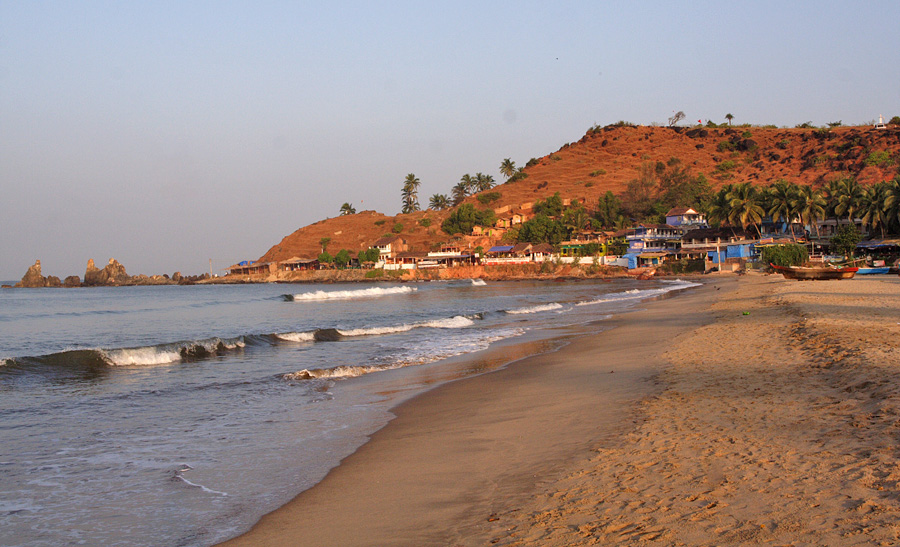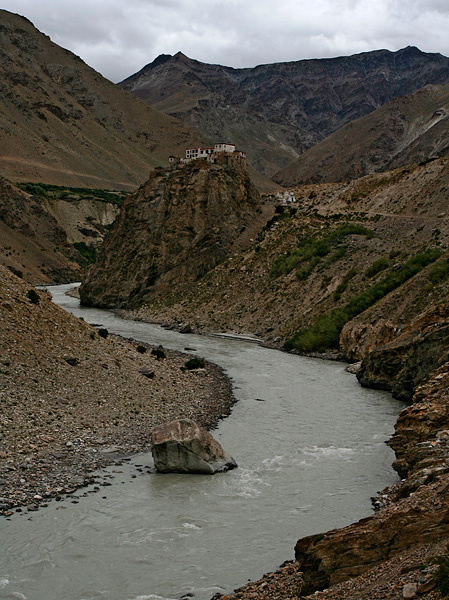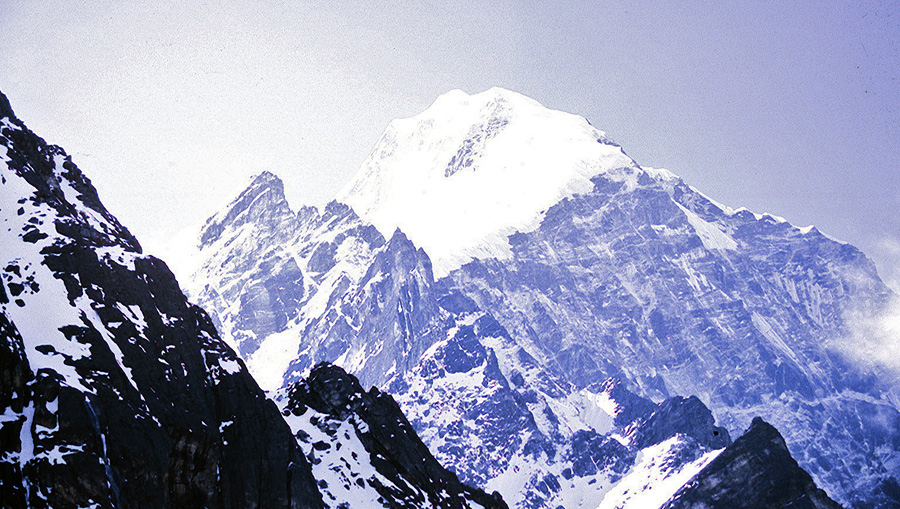This story appeared first appeared in Discover India magazine about five years ago.
My bus from Mapusa rattled and crawled northwards slowly, stopping at every turn on the way to pick up or drop passengers. The window view kept changing from plush Goan Villas and betelnut orchards on flat terrains to green vistas across rolling hills. Once in a while, the road skirted close to empty sandy stretches at the edge of blue expanse of water, indicating what is in store ahead. I reached Arambol Beach an hour later, or Harmal as the locals prefer to call it.

The long beach of Arambol qualifies for nearly every cliche that Goa’s beaches are known for – gentle waves over shallow waters, wide beaches with fine white sand and tall coconut trees lining the edge of of the sandy shore. But unlike the more popular beaches of Goa, there is no one here who want to help me find a hotel, calling for a parasailing ride, inviting into their restaurants or coaxing me hire a beach bench. My search for inertia in Goa ends at Arambol Beach, with its relaxed and uncrowded beach allowing me moments of leisure and laziness.
In the summer of 2008, I travelled extensively in Ladakh spending two memorable months in the mountain country. Then, I had quit my corporate job a few months ago and was enjoying my time seeing the country. I travelled on budget, taking public transport as much as possible and living in home-stays in the villages. At the end of my trip, I exited Ladakh by making a two day bus journey to Padum in Zanskar and then making the nine-day trek through the mountains that led me to Darcha in Himachal Pradesh. The duration of Padum to Darcha trek is reducing every year, with a new motor road in the making I maintained a journal for much part of the journey to Ladakh, including this trek. Here a detailed trek-log, much of it taken as-is from the journal.
Padum to Darcha Trek
The road to Darcha goes along Lungnak River, steadily climbing up until the river’s origin near Shingo-la Pass. We begin from Padum on an unmetalled road, under construction from the venerable Border Roads Organization. Some day, when this road is ready, the entire stretch of our trekking route will be replaced by a highway that will probably be just wide enough for a vehicle to pass. But that’s just how Himalayan Roads are. The trek-route will be defunct then, so there is a sense of urgency in doing it now.
It’s a smooth walk from Padum along the road till we reach Bardan, the next village on the way. There are a few streams breaking the path that disturb the monotony of walking on the road. At Bardan, a monastery dominates the village landscape, standing on a crag at the end of a smooth curve of the river. Beyond the monastery, the mountains plunge into a deep gorge carved by Lungnak River.

Bardan Monastery and Lungnak River
Just before the arriving at monastery, I see a tiny rodent that runs pasts me into its hiding in a wall built from rocks. I wait for it to come out, keeping my camera aimed at its hole. It sure does, carefully checking out for enemies from its safety. I take a few pictures, which later help me identify it as a Himalayan Pika. A few minutes of walking later, I encounter a white rumped swallow-like bird and a red-tailed bird, neither of which I am able to name.
In the summer of 2002, I decided not to live my life sitting holed up in the city. I made up my mind to take every opportunity to travel and see the beautiful country we have. On the next holiday-slot available, I headed towards the Himalayas, to walk in the wilderness and see the snow peaks. I had never known what high-altitude meant, till then.

My good karma took me to Sikkim, where I saw a new world. I discovered that people can be so friendly that you completely drop your guard and walk around with a wide grin instead. I saw woods so thick that it is impossible to set a foot through them. I saw streams of sweet, frigid waters coming down the mountains and rushing away in a great hurry. I saw wildflowers splattering my path, carpeting the floor and decorating the trees.


